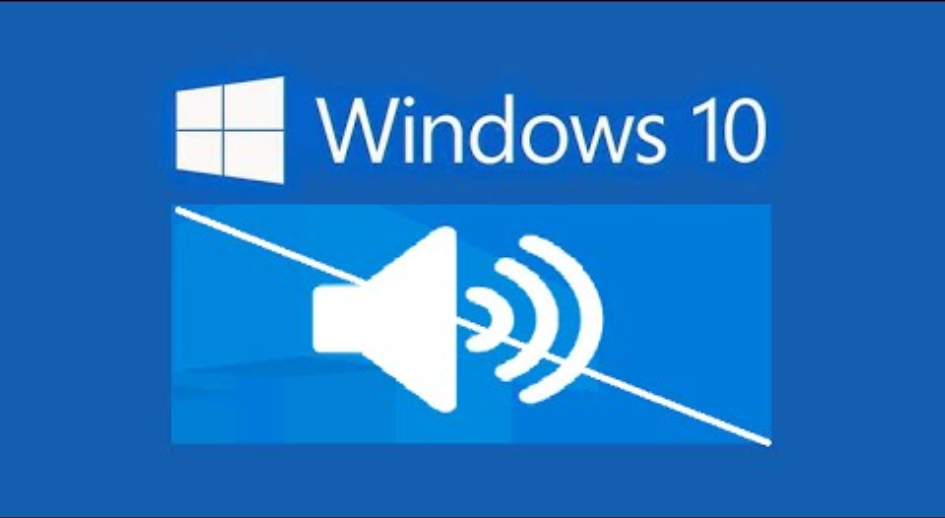
There are many of our readers who commented on us that they are suffering from a problem where audio is not working on their Windows 10 PC? It's frustrating enough to have no sound on your computer, but we're here to help. Many of these solutions apply to Windows 11 as well.
1. Check Volume Levels and Muted Outputs
First, you should check that if there is no sound on your computer, double-check to make sure you haven't muted the audio. To check the master volume bar, click on the volume icon in the lower-right corner of your computer; Make sure it is not muted or set to an extremely low level. If it's muted, you'll see an X next to the speaker icon. Right-click on the same volume icon and choose Open Volume Mixer to see the current volume level for all apps playing audio. Turn these on as needed, confirming that they are not accidentally muted or too hard to hear. You may have to troubleshoot low audio output if you hear sound, but it's pretty quiet.
Another important thing that we have to keep in mind is that, be sure to check the volume level for any active apps, games, video players, or similar. Even if you have both the master and browser volume levels on the Windows level, a muted YouTube video will still produce no sound.
For information, let us tell you that, on a related note, you should also close any audio-heavy apps that you are not actively using. Some programs can control your audio device, so you won't hear anything from the other device. For example, when using Bluetooth headphones, being in a Discord call can prevent you from hearing audio from other apps.
After that you should restart your computer. Your sound problem may be temporary, perhaps due to a pending update that has locked the audio output.
2. Make Sure You're Using the Right Audio Output
When more than one audio output device is connected to your computer, it is possible that Windows is playing sound from the wrong device.
To do this, click the volume icon again to change the device you are using for playback. Above the volume slider, you'll see the name of the current device, if you have more than one enabled. Click it to open a menu of all available devices, then select the output you want to use from the list.
Note that this is just a quick switcher, so it might not show all available devices. To see a full list of audio devices connected to your PC, right-click on the volume icon and select Open Sound Settings. It serves as a shortcut to Settings > System > Sound menu.
Next, what you need to do is, on this page, click Manage sound devices under the heading Choose your output device to see everything connected to your computer. Use the Test button to play a quick tone for any available device. After changing the output device, you may need to recheck the volume levels as described above.
Then you have to check the Disabled section to make sure you haven't turned off the device you want to use. Click on an option and hit Enable to turn it back on when needed.
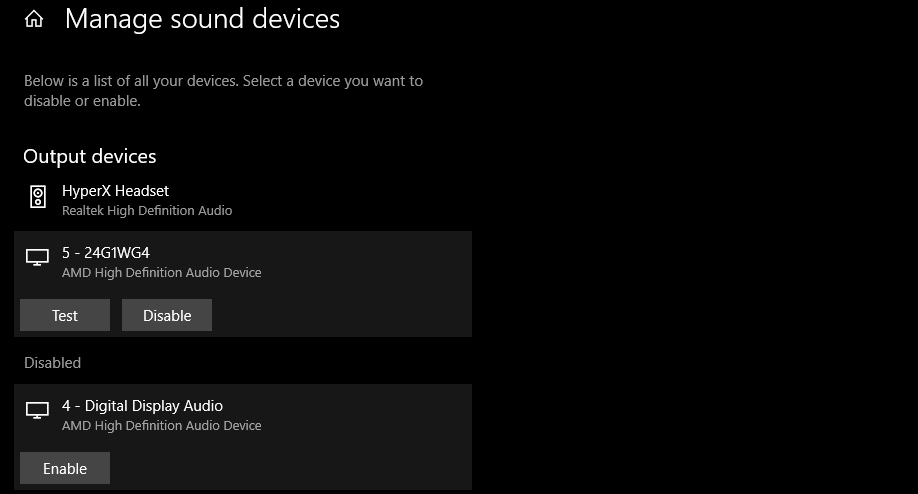
Still, if you don't see the audio output as expected, or it doesn't work, continue with the steps below. Your speakers, headphones, or other audio device needs further troubleshooting.
3. Check All Audio Cables and Wireless Connections
You should now check the physical connections of all your audio devices, especially if your desired output does not appear in the above menu. Make sure all audio (and power) cables are firmly plugged into your computer as well as the device. It's a good idea to unplug and reconnect everything, just to make sure there are no loose connections. Confirm that you have the audio cables plugged into the correct ports. Normally, the audio output device should go into the green port, which sometimes has a headphone icon. If a cable is worn out, excessively bent, or otherwise damaged, it may become unusable. You may have to shake it to get a good connection. If possible, consider replacing worn-out cables. For wireless audio devices like headphones, go to Settings > Devices > Bluetooth & other devices and make sure you've properly connected your device to your computer. See How to troubleshoot Bluetooth in Windows 10 for more help with wireless devices.
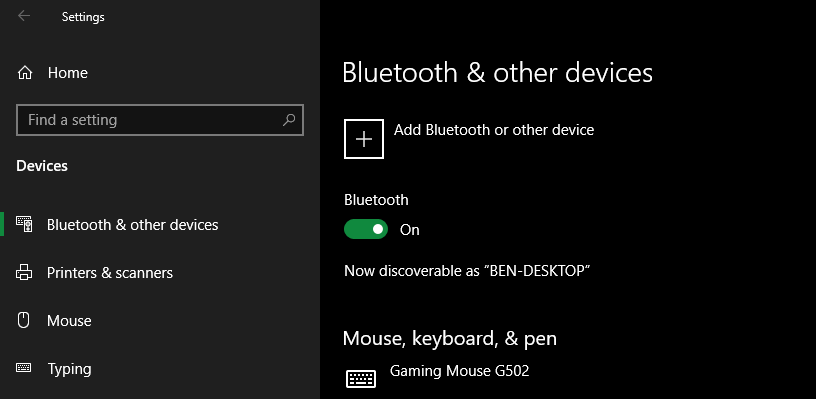
One thing to note is that if you use Bluetooth headphones with your phone, tablet, TV, or other similar device, first disconnect them from the other device, then try connecting them to your Windows PC again. Do it. Attempting to play audio from your computer to your Bluetooth headphones will not work when those headphones are currently connected to your phone. Lastly, try disconnecting all audio devices from your PC except the ones you want to use, in case something is interfering with the other device.
4. Try the Windows Audio Troubleshooter
For information, let us tell you that it is worth running the built-in audio troubleshooter. This allows Windows 10 to recognize and fix occasional issues. These Windows troubleshooters don't always fix the problem, but before you dive deeper, it's worth a shot.
Go to Settings > Update & security > Troubleshoot > Additional troubleshooters and select Playing audio. Follow the instructions, and hopefully, Windows will fix the problem automatically. You'll see what fixes, if any, applied to the troubleshooter when it's done.
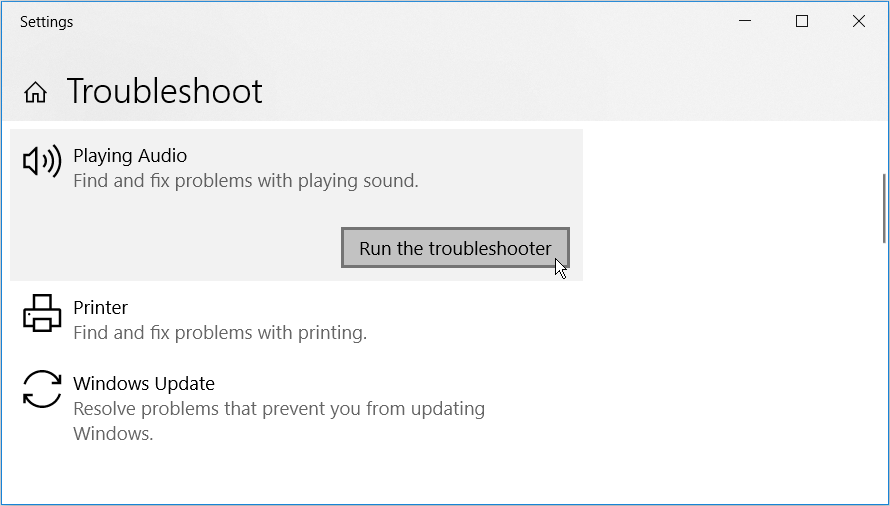
5. Roll Back or Reinstall Audio Drivers
When you configure the driver it usually works well initially, but when something goes wrong, they cause annoying issues. Your audio driver may be corrupt, or it may need an update to fix a problem. Windows 10 gives some options to fight with the problematic driver. You'll find these in Device Manager, which you can access from a handy menu by right-clicking the Start button or pressing Win + X.
Another thing you can do. You can try to just roll back the driver to the last good configuration. To do this, in Device Manager, expand the Audio Input and Output section. Right-click the audio device you're using, select Properties, and browse to the Driver tab. Press the Roll Back Driver option, if available, and Windows 10 will begin the process of using the prior driver version. However, this is only available if an older driver is rolled back. If you cannot roll back the driver, you must either choose Update Driver or uninstall the device.
After that, you can try to update the driver through this menu, although you'll need to update the driver manually instead because Windows isn't great at finding unique drivers for your system. Assuming that there is no update available, choose Uninstall device. This will remove the offending driver, so you can reinstall with a fresh copy.
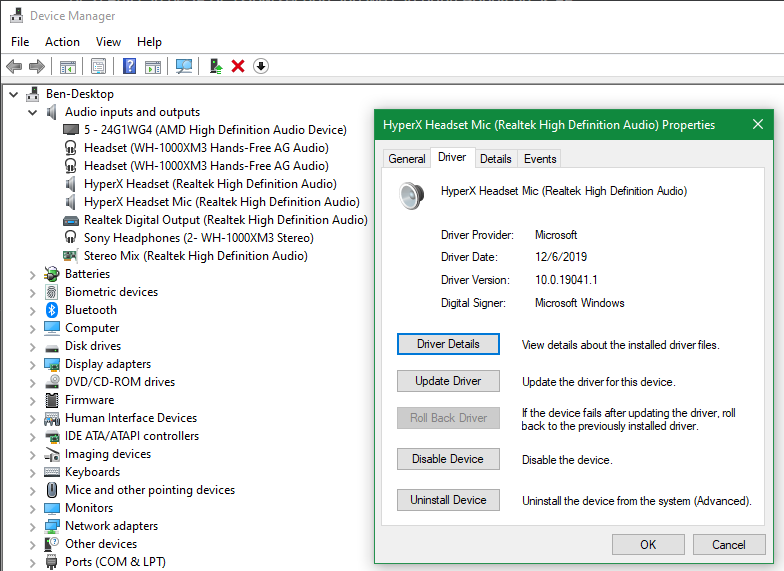
One important thing that you need to keep in mind is that, before proceeding with the uninstallation, download the latest manufacturer version of the driver, if available. You will usually be able to download them directly from the hardware issuer's website. Googling your device's name after "driver" should be enough to find it—don't download drivers from shady third-party websites. If there isn't a specific driver available for your device, go ahead anyway and Windows will reinstall a generic driver when it reboots. Click Uninstall device in the Properties window, and you will see the Confirm device uninstall box. Depending on the driver, this window may also have an option to remove the driver software for this device. If it is an option, check the box and press OK.
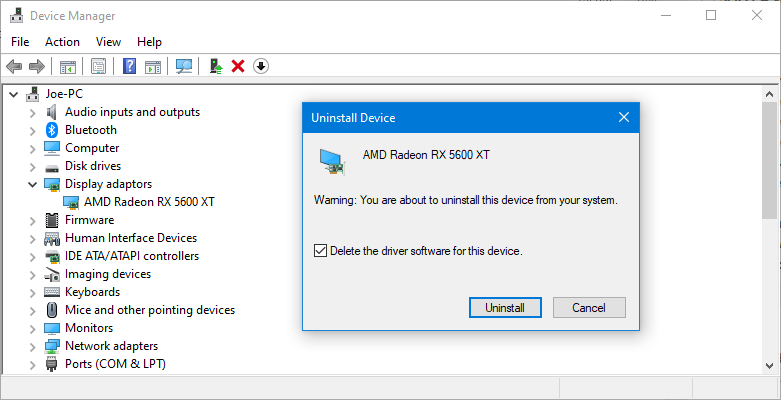
One special thing that you need to pay attention to is that, once you erase the drivers, restart your system. If you were able to download a new driver, install it now. Otherwise, Windows should have already reinstalled its normal driver for your device. If doing the above for a specific device doesn't fix the problem, try these steps for the device's entry under the Sound, video and game controllers category.
6. Update the IDT High Definition Audio CODEC
Sometimes it happens that some systems may encounter problems with IDT High Definition Audio codec. This can be fixed with a manual driver update, which allows you to choose the sound driver you want to use. As discussed above, go to Device Manager again. Expand the Sound, video and game controllers section. If you see IDT High Definition Audio Codec, right-click on it and select Update Driver. You may not see it depending on your PC. If you don't, continue to the next section. In the next panel, select Browse my computer for drivers, then let me choose from a list of drivers available on my computer. It allows you to select from any of the drivers already installed on the system.
Next you have to make sure that Show compatible hardware is checked. Then under Model, select High Definition Audio Device, then Next, and finally Yes. You may need to restart your system for the changes to take effect. If this fixes your audio problem, you might want to consider improving your PC's sound quality next time around.
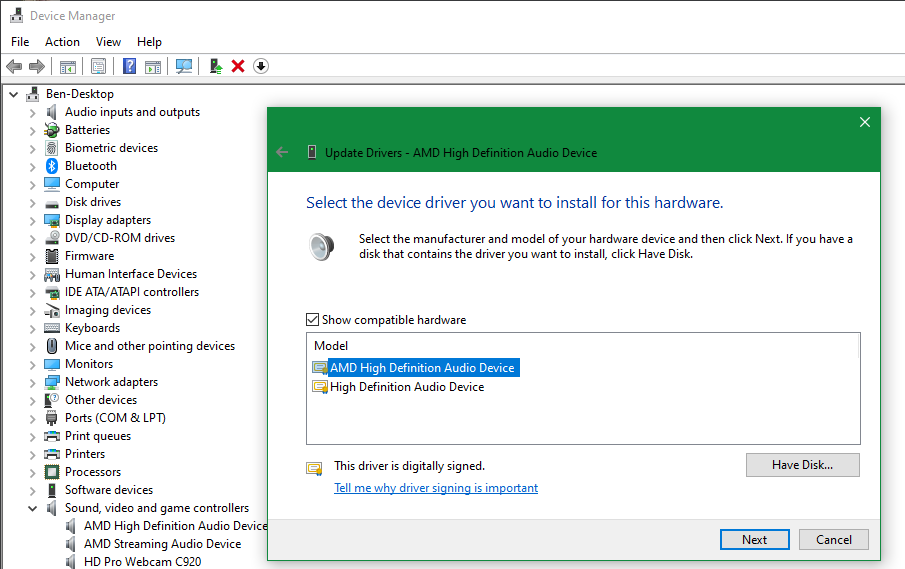
7. Fix Realtek High Definition Audio Problems
Depending on your computer manufacturer and hardware, you may have a Realtek audio driver instead of an IDT. Realtek drivers also appear frequently in forum posts discussing audio issues on Windows. First of all, follow same IDT procedure above to check for driver update for Realtek Audio. If that doesn't work, there are some more specific fixes for Realtek audio problems to try.
Refresh Your Wi-Fi Drivers
One common fix when Windows 10 has no sound focuses on disabling Realtek WLAN drivers, uninstalling, then reinstalling the latest version—even if you already have the latest version installed.
First, head over to the Realtek website and download the latest applicable driver version for your system. Then open the Device Manager again, and browse to your Realtek Wireless LAN drivers. These should be under Network adapters, and will have both Realtek and Wireless in the name.
Right-click the driver and hit Uninstall device. Now head to the new driver file you downloaded, extract its contents, find the setup.exe or similar install file, and follow the instructions. You'll need to reboot your system following the installation.
Disable the Front Panel Audio Jack
This fix could be system-specific, but it's fixed an audio issue for at least one person, so it could solve your problem too.
Reddit user Tiflotin fixed a persistent Realtek audio issue by disabling front jack detection from within Realtek HD Audio Manager. You can open this utility by double-clicking the Realtek speaker icon that appears in the System Tray at the bottom-right corner of your screen. It might appear in the expanded menu that shows when you click the small arrow.
On newer systems, this app has been replaced with Realtek Audio Console, and is available by searching your PC like you would for any other app. Under Device advanced settings, you'll see an option titled Disable front panel jack detection. Try enabling this slider.
If you're already pulling your hair out, this could be worth a try!
8. Disable Windows Audio Enhancements
Then there are the audio enhancements of Windows 10. Audio enhancements are built-in Microsoft and third-party packages designed to make your system's audio sound better—or at least different—in a variety of ways. However, these "enhancements" may be the cause of your Windows 10 audio problem. Fortunately, they are easy to turn off.
If you want to access audio enhancements. So for this, right-click on the speaker icon in the system tray and choose Sounds to open the Sound window of Control Panel. Here, switch to the Playback tab and double-click on the audio device you are using. In the next window, click on the Enhancements tab. There, check the box labeled Disable all enhancements. If it isn't already, press Apply. If you're having audio problems with multiple devices, repeat this process for each one in the playback list.
One more thing that is very important to make sure, the device you want to use is set as the default. Right-click it and choose Set as default device to do so.
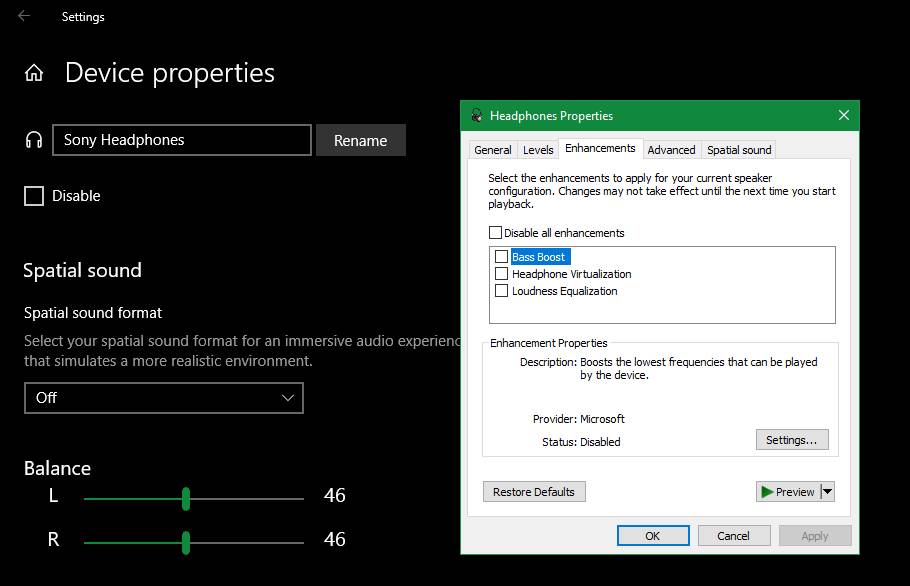
9. Restart Windows Audio Services
If this still doesn't fix the problem, the reason why the sound doesn't work on your computer could be a problem with Windows services. While audio services should work normally, they can sometimes disable themselves for no reason at all. If this happens, you will have no voice. Type services in the Start menu to find and open Services Manager. Scroll down to Windows Audio. If the service is not running, your system audio will not work properly. Restart it by double-clicking and selecting Start.
After that you double check the startup type of the service. Audio services should be set to Automatic by default. If it's something different—automatic (delayed start), manual, or disabled—change it back.
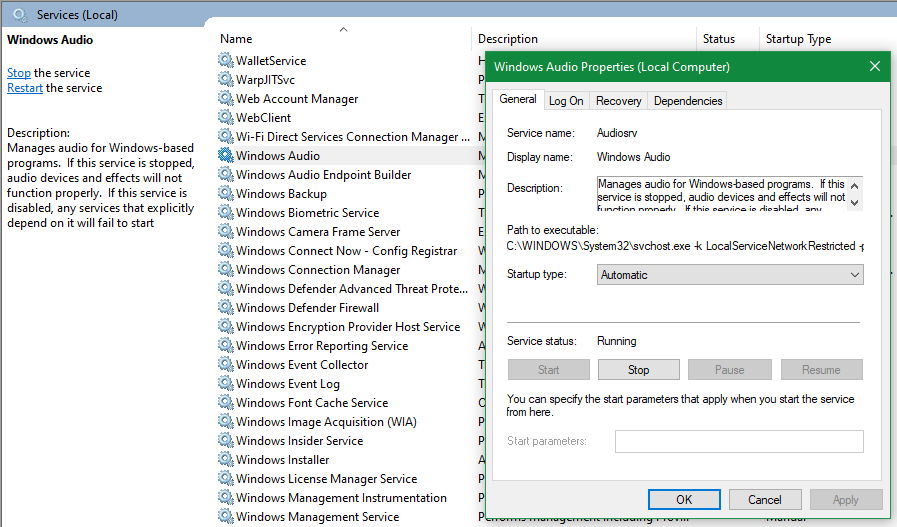
Check Windows Audio Endpoint Builder in the same way, since audio also relies on this running correctly.
No Sound on Your Computer? Now You Can Hear Clearly
We've covered all the information we had on fixes for Windows 10 (and Windows 11) audio problems in this article. Hopefully, you can hear your computer sound once again.
But it's also true that there isn't a surefire solution for all issues, Windows 10 prefers that you use the built-in high definition audio driver, and it's important to update, uninstall, reinstall, and roll back this driver. Includes a large amount of fixes we've read through.
Hope you will be satisfied with this article. Don’t forget to bookmark our page if you want to read more game updates and news
Disclaimer: The above information is for general informational purposes only. All information on the Site is provided in good faith, however we make no representation or warranty of any kind, express or implied, regarding the accuracy, adequacy, validity, reliability, availability or completeness of any information on the Site.
